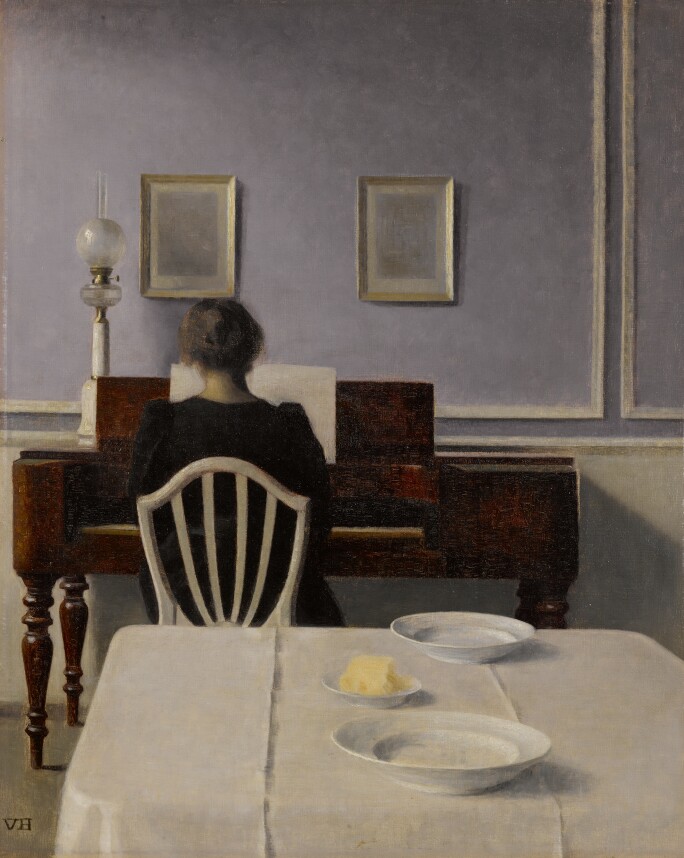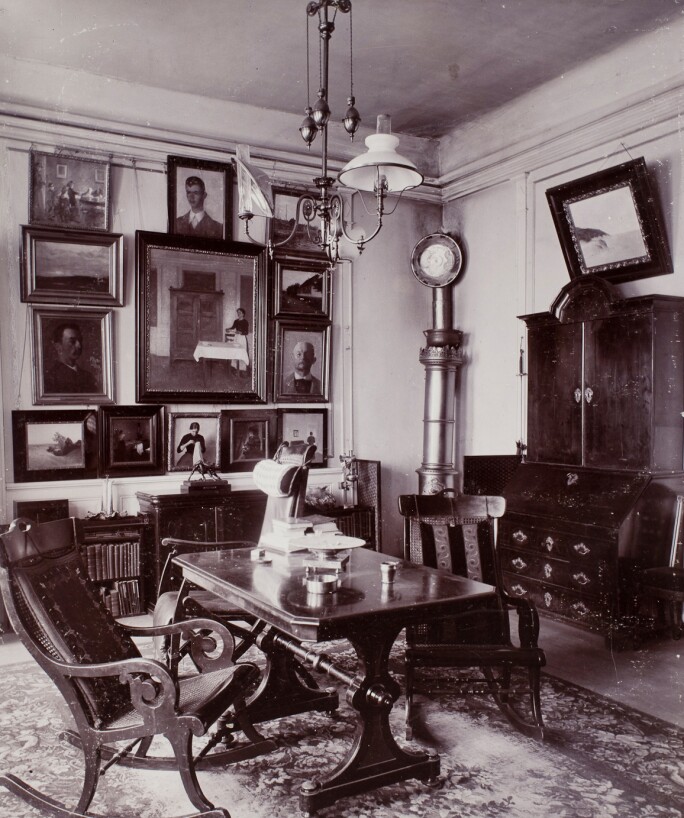Painted in 1895, Interior, setting the table depicts the dining room of Vilhelm and Ida Hammershøi’s first home together after getting married, a rented apartment in a villa named Ny Bakkehus in Frederiksberg near Copenhagen. The couple lived here for five years, from 1892 until 1897, during which time Hammershøi was still primarily preoccupied with portraits and landscape painting. Compositionally and in terms of the light and tonal qualities, the painting is therefore among his first interiors, and anticipates those painted at his subsequent addresses, notably at Strandgade 30, to which the couple moved in 1898.

Even in this early interior, all the qualities and devices found in his later works are already present. The laid table with its crisp linen tablecloth anticipates Woman at the Piano, Strandgade 30 of 1901, with its similarly cloth-covered table with two plates and the addition of a butter dish (fig. 1). The overall sense of enclosure and mystery is palpable, with everything beyond the room shut out: nothing but darkness is visible through the three windows, and the central one is curiously obstructed by the massive mahogany wardrobe. As so typical of Hammershøi’s interiors, the painting poses more questions than it answers. There is the wavy ceiling cornice (found so often in other interiors); the cupboard without door knobs; and the table’s legs farthest from the viewer seem not aligned with the nearest two. And what lies beyond the windows? Simply the black of night, adding to the pervading sense of silence.
Exhibited to critical acclaim at Den Frie Udstilling in Copenhagen in 1895, the painting was acquired a year later by Hammershøi’s loyal patron and author of the first catalogue raisonné of the artist’s work, Alfred Bramsen (1851–1932), in whose collection it remained until his death and who lent it to two exhibitions of Hammershøi’s work at Kunstforeningen in Copenhagen in 1916 and 1930 (fig. 2). It was sold by Bramsen’s children in 1934, and then spent the next 75 years in several prestigious private collections in Scandinavia, most recently that of the celebrated Swedish writer, critic and publicist Olof Lagercrantz (1911–2002).
